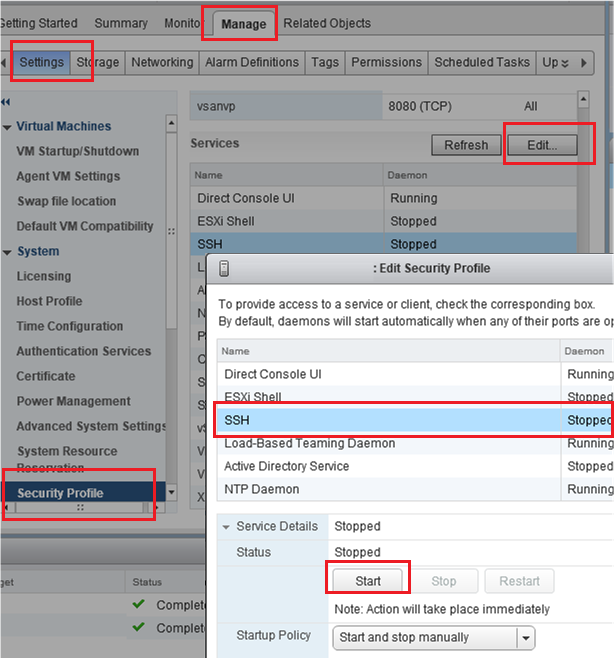

The distributed switch also provides the ability to monitor the virtual network with industry standard tools that are not available with the standard switch. Under the Manage tab, the topology view gives us a quick overview of all the port groups available on the distributed switch, the number of VMkernel Ports, and virtual machines attached to each port group. It is this simple to seamlessly migrate VMs from one network to another. We go into and see that the virtual machine web01 has been migrated to it. Here, we will move the web01 virtual machine from the VMNet1 network to the VMNet2 network using the Network Adapter drop-down and click on. We right-click on the virtual machine and click on.

#Enable ssh vmware vsphere client 6.5 how to
Next we will demonstrate how to migrate a virtual machine from one network to another on the switch. This is one of the many benefits of the distributed switch. If we make any changes to this port group, the changes also reflect on all the hosts. We go to the tab and see all three hosts are connected to the port group. To verify this, we go into the newly created port group. Since all three hosts in the inventory are connected to the distributed switch, they all automatically have the new port group configuration. The new port group has been created and we see it in the inventory. We assign a name to the port group and click on. We will now create a new port group to demonstrate how a port group created on the distributed switch is automatically assigned to all hosts that are connected to the distributed switch. This is because vSphere distributed switch is a datacenter object, unlike the standard switch, which is a host object. Notice that the distributed switch is under the datacenter. We see our distributed switch, which contains four port groups. Let us now examine the distributed switch itself. Notice that the port groups and uplinks are the same for this host as well and that it is attached to DSwitch1. Notice that the host is attached to the distributed switch DSwitch1. We verify the port groups and uplinks and go to the host named. To verify if the hosts have the same uplinks and port groups, we note the hosts and uplinks of the host named esx01-vmware.local and go to the next host named. We also have two virtual machines in the environment. We have already created a distributed switch named DSwitch1 for this demo and all three hosts are attached to it. We begin by navigating to the view to review the current inventory. Use arrow keys to navigate through the screens. This walkthrough is designed to provide an introduction to the VMware vSphere Distributed Switch and the capabilities it enables. Introduction to vSphere Distributed Switch


 0 kommentar(er)
0 kommentar(er)
